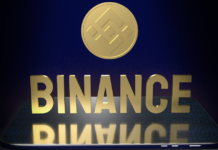There are now many options to bridge Bitcoin for use on various blockchain networks. However, some have distinct benefits over others. In this article, we will explore the differences between Bitcoin bridges.
Bridging Bitcoin provides a way to bring the asset to decentralized finance (DeFi). Native Bitcoin cannot be used in DeFi protocols, so it needs to be bridged, wrapped, or tokenized.
Furthermore, Wrapped Bitcoin (WBTC) was the first protocol to tokenize the asset, and it is the current industry standard. It is an ERC-20 wrapped version of the asset used on Ethereum-based protocols and networks. Additionally, there is currently 263,028 WBTC in circulation, giving it a market cap of $5.26 billion at current prices.
The primary advantage of WBTC is that it is the industry standard, used, and accepted in most places. Wrapped BTC brings the power and trust associated with Bitcoin into the DeFi industry. Furthermore, it enables Bitcoin’s deep liquidity and large volumes to be injected into dApps and smart contracts.
The main disadvantage of WBTC is Ethereum gas fees, which can be astronomical during peak demand periods on the network.
Alternative Bitcoin Bridges
Users are migrating to alternative Bitcoin bridges and tokenization to avoid the heavy transaction fees. One such option is Binance Bridge 2.0, which launched in March.
The Binance Bridge allows wrapped tokens and ERC-20 tokens to be bridged into the BEP-20 Binance ecosystem. Furthermore, the system allows users to wrap non-BEP-20 tokens and use them as BTokens with the BNB Chain ecosystem. Additionally, all bridged BTokens are protected by the “Zero Trust Solution” and pegged to the original asset at a rate of 1:1.
The advantages of using the Binance bridge include speed and low costs. Additionally, Binance has an excellent track record for security and reliability.
Another Bitcoin bridge that has grown in popularity is the Avalanche bridge with the BTC.b token. This enables users to bring Bitcoin into the ever-growing Avalanche ecosystem. Avalanche also has advantages of high speed, low-cost DeFi compared to alternatives on Layer 1 Ethereum. Furthermore, Avalanche added native support for Bitcoin earlier this month.
With the release of @CoreApp_, the Avalanche Bridge has added support for bridging native Bitcoin to #Avalanche
This new functionality unlocks half a trillion dollars of value on the Bitcoin network, allowing users to put their $BTC to work on Avalanche🤝https://t.co/CHNQ7ck2oz
— Avalanche 🔺 (@avalancheavax) June 22, 2022
There are other Bitcoin bridges, such as RenBridge. This dApp allows users to mint real Bitcoin and Bitcoin Cash as ERC-20 tokens on the Ethereum blockchain, such as renBTC and renBCH.
Bridge Disadvantages
One main concern with bridges at the moment is security. They have become a target for hackers and malicious actors in recent months. Last week, the Harmony blockchain network lost $100 million from an exploit of its Horizon bridge. There are also custodial risks with bridge operators conspiring to control the assets.
⬆️For more cryptocurrency news, check out the Altcoin Buzz YouTube channel.
⬆️Find the most undervalued gems, up-to-date research, and NFT buys with Altcoin Buzz Access. Join us for $99 per month now.



























